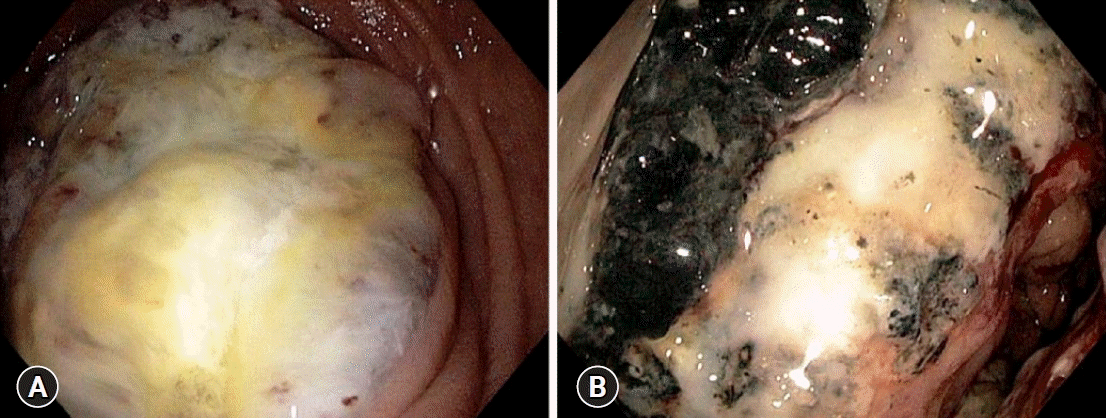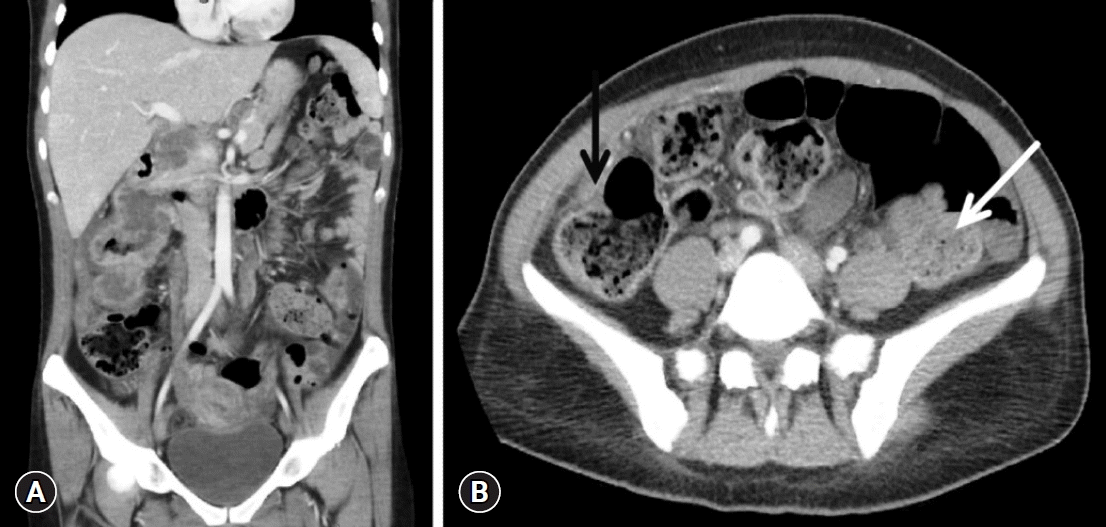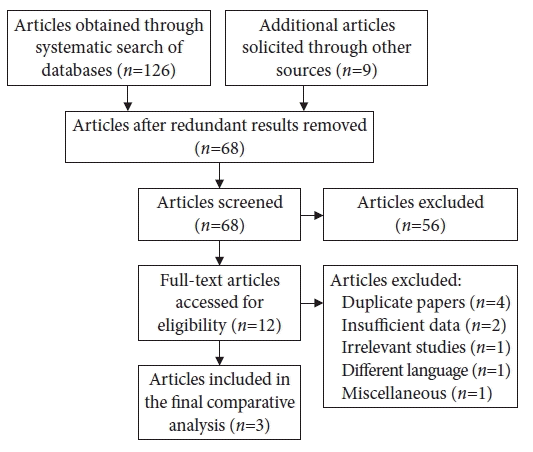Abstract
Notes
Author Contributions
Conceptualization: all authors; Data curation: AM, FI, MHNG; Formal analysis: AM, FI; Investigation: FI, AM, AA, SS; Methodology: all authors; Project administration: AM, FI; Visualization: all authors; Writing–original draft: AM, FI, MHNG; Writing–review & editing: all authors.
REFERENCES
Fig. 1.

Fig. 2.

Fig. 3.

Table 1.
Table 2.
| Authors | Country | Age (yr)/sex | Clinical presentation | CSF and serologic findings | Cancer site | Timing of CRC diagnosis in relation to CIDP | EP/sural nerve biopsy findings | Treatment | Outcome and follow-up |
|---|---|---|---|---|---|---|---|---|---|
| Antoine et al. (1996)6 | France | 73/M | Paresthesia, loss of strength in hands, abdominal pain, diarrhea | 1 Leucocyte/mm3, CSF protein 90 mg/dL, normal IgG pattern | Rectosigmoid mass with a single hepatic metastasis | Concurrent | EP: pure upper limb CIDP with demyelinating features. Biopsy: mononuclear infiltrates | Rectosigmoidectomy and partial hepatectomy | Improved with tumor resection |
| Ayyappan et al. (2015)7 | Australia | 78/F | Bilateral hand and left great toe numbness and weakness, abdominal pain, constipation | Positive anti-MAG and ANA, mild eosinophilia, mildly elevated ESR | Sigmoid colon | 1 mo after | EP: demyelinating features of DADS-CIDP | Laparoscopy-assisted high anterior resection of the sigmoid colon | Improved 8 mo after tumor resection; anti-MAG anti-bodies became negative |
| Galassi and Luppi (2016)8 | Italy | 53/M | Acroparesthesias, areflexia, loss of touch and vibration sensation | CSF protein 140 mg/dL, monoclonal IgG lambda positive, CEA 100 ng/dL | Sigmoid colon | 52 mo after | EP: demyelinating features of DADS-CIDP | Radical hemicolectomy followed by chemotherapy with leucovorin and 5-FU | Died 12 mo after cancer diagnosis |
| The present report | USA | 32/F | Dyspnea on exertion, lightheadedness, anorexia, malaise, worsening CIDP symptoms | Positive anti-MAG and ANA | Right colon infiltrating adenocarcinoma directly invading into the duodenum | 18 mo after | EP: demyelinating features of CIDP | Right hemicolectomy plus pancreaticoduodenectomy followed by chemotherapy with leucovorin and 5-FU | Improved with tumor resection in 10 mo of follow-up; anti-MAG antibodies disappeared |
CSF, cerebrospinal fluid; CRC, colorectal carcinoma; CIDP, chronic inflammatory demyelinating neuropathy; EP, electrophysiology; M, male; F, female; anti-MAG, anti-myelin-associated glycoprotein; ANA, antinuclear antibody; ESR, erythrocyte sedimentation rate; DADS, distal acquired demyelinating symmetric; CEA, carcinoembryonic antigen; 5-FU, 5-fluorouracil.




 PDF
PDF Citation
Citation Print
Print



 XML Download
XML Download